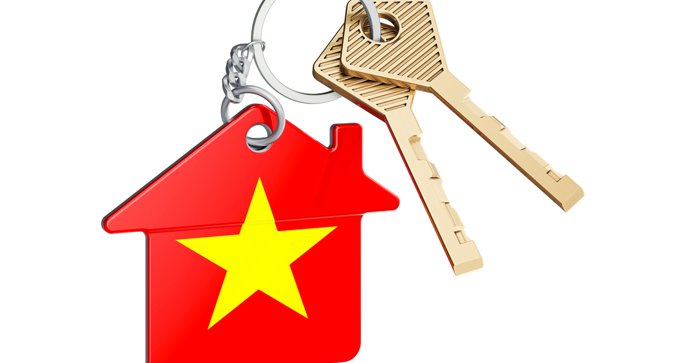Property prices in Vietnam

After several years of decline due
Main markets
The most popular real estate markets of Vietnam are the metropolitan cities of Ho Chi Minh (Thành phố Hồ Chí Minh) and Hanoi (Hà Nội) as well as the resorts of Danang (Đà Nẵng) and Nha Trang.
The largest cities in Vietnam are
The densely populated district 1 (quận 1) is the noisy city centre, including the financial district, with a lot of foreign consulates, cafes, restaurants and bars geared towards westerners. "The district is already built up, and no new projects are expected to be completed. The prices there are high (from $3,000 per m²) and have a potential for growth due to the limited capacity for construction. It is easy and profitable to lease there since the rental prices are high, and there is practically zero competition. Serviced apartments prevail in the residential property market. An 80 m²
District 2 (quận 2) is just
Many foreign citizens, especially those from Japan and Korea buy and rent property in district 7 (quận 7). Similarly to the other two districts, the demand for rental apartments is high there. "Due to the heavy traffic, commuting to the centre from this district is inconvenient, and those who buy property in district 7 mainly work there. Fortunately, there are large corporations (Adidas, Unilever, KPMG) and a financial centre there," says Victoria Hoang.
Tourism and, consequently, the resort property markets are rapidly developing in Vietnam. Investors are interested in Danang and Nha Trang, where hotels and apartment buildings are actively being constructed. These cities attract tourists with their cultural landmarks, sandy beaches, bars and nightclubs.
Other popular resorts include the Phú Quốc archipelago, covered with tropical forests, the surfer town Mũi Né and Côn Đảo Island, famous for its coral reefs. The most promising of them in terms of investments is Phú Quốc, as the local tourist infrastructure is only just starting to develop.
Residential property prices
According to Savills, the Vietnamese property market has shorter cycles than that of Australia or the UK, for example,
The Vietnamese residential property market is less transparent in comparison to that of Europe and the US. Statistics for property price are only available for large cities.
In Ho Chi Minh City, the prices for apartments skyrocketed
According to Numbeo, one square metre of property in a Vietnamese city costs $2,100 on average. The most expensive markets are Hanoi and Ho Chi Minh City where the prices reach (and, in the prime property segment, even exceed) $4,000 per m².
| Suburbs | City centre | ||
| Danang | 700 | ||
| Nha Trang | |||
| Hanoi | |||
| Ho Chi Minh City |
We will send you a content digest not more than once a week
- Property Prices
- Buying and Registering
- Mortgage
- Property Maintenance
- Taxes
